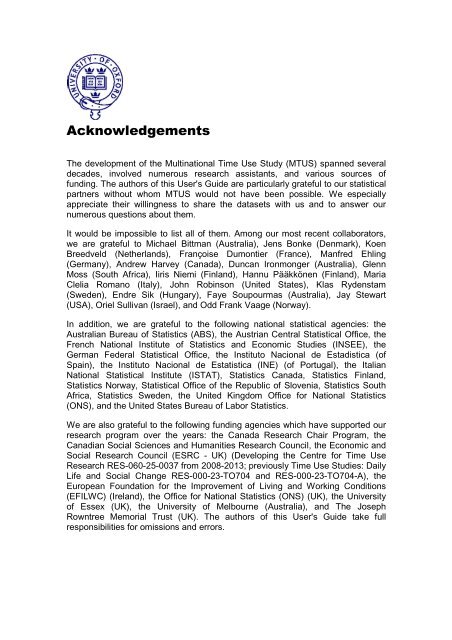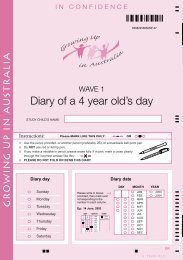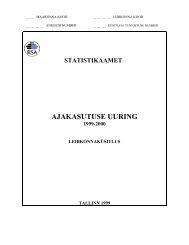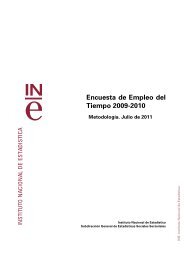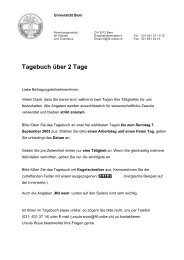multinational time use study user's guide and documentation
multinational time use study user's guide and documentation
multinational time use study user's guide and documentation
- No tags were found...
Create successful ePaper yourself
Turn your PDF publications into a flip-book with our unique Google optimized e-Paper software.
AcknowledgementsThe development of the Multinational Time Use Study (MTUS) spanned severaldecades, involved numerous research assistants, <strong>and</strong> various sources offunding. The authors of this User's Guide are particularly grateful to our statisticalpartners without whom MTUS would not have been possible. We especiallyappreciate their willingness to share the datasets with us <strong>and</strong> to answer ournumerous questions about them.It would be impossible to list all of them. Among our most recent collaborators,we are grateful to Michael Bittman (Australia), Jens Bonke (Denmark), KoenBreedveld (Netherl<strong>and</strong>s), Françoise Dumontier (France), Manfred Ehling(Germany), Andrew Harvey (Canada), Duncan Ironmonger (Australia), GlennMoss (South Africa), Iiris Niemi (Finl<strong>and</strong>), Hannu Pääkkönen (Finl<strong>and</strong>), MariaClelia Romano (Italy), John Robinson (United States), Klas Rydenstam(Sweden), Endre Sik (Hungary), Faye Soupourmas (Australia), Jay Stewart(USA), Oriel Sullivan (Israel), <strong>and</strong> Odd Frank Vaage (Norway).In addition, we are grateful to the following national statistical agencies: theAustralian Bureau of Statistics (ABS), the Austrian Central Statistical Office, theFrench National Institute of Statistics <strong>and</strong> Economic Studies (INSEE), theGerman Federal Statistical Office, the Instituto Nacional de Estadistica (ofSpain), the Instituto Nacional de Estatistica (INE) (of Portugal), the ItalianNational Statistical Institute (ISTAT), Statistics Canada, Statistics Finl<strong>and</strong>,Statistics Norway, Statistical Office of the Republic of Slovenia, Statistics SouthAfrica, Statistics Sweden, the United Kingdom Office for National Statistics(ONS), <strong>and</strong> the United States Bureau of Labor Statistics.We are also grateful to the following funding agencies which have supported ourresearch program over the years: the Canada Research Chair Program, theCanadian Social Sciences <strong>and</strong> Humanities Research Council, the Economic <strong>and</strong>Social Research Council (ESRC - UK) (Developing the Centre for Time UseResearch RES-060-25-0037 from 2008-2013; previously Time Use Studies: DailyLife <strong>and</strong> Social Change RES-000-23-TO704 <strong>and</strong> RES-000-23-TO704-A), theEuropean Foundation for the Improvement of Living <strong>and</strong> Working Conditions(EFILWC) (Irel<strong>and</strong>), the Office for National Statistics (ONS) (UK), the Universityof Essex (UK), the University of Melbourne (Australia), <strong>and</strong> The JosephRowntree Memorial Trust (UK). The authors of this User's Guide take fullresponsibilities for omissions <strong>and</strong> errors.


